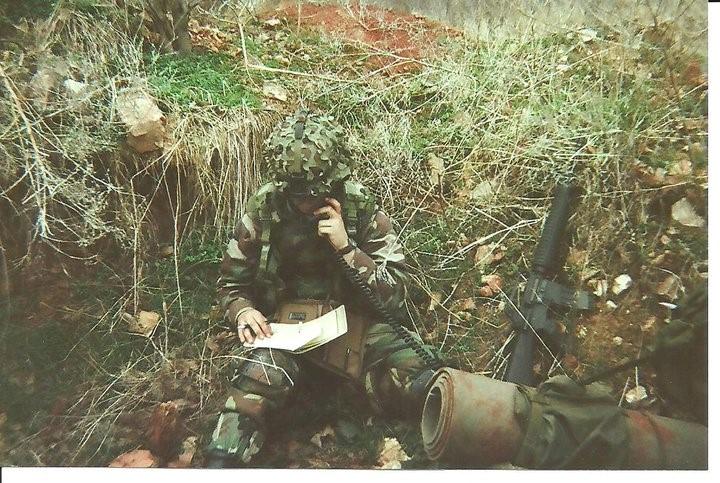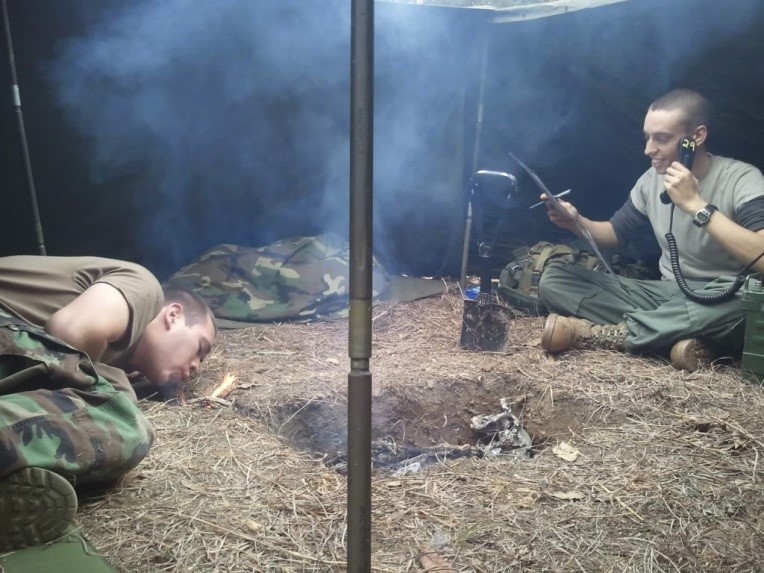In Part 1 of this series, we framed the SOI as to its use and focused on the portions that do not involve a radio. Building upon that knowledge, we’ll discuss Call
Signs, Encryption Code/Authentication Tables, and Brevity Codes. Each of these is a must when communicating over a radio in order to keep your message ambiguous to any unwanted listening ear.
Call Signs:
In most circumstances, call signs are designated by an alpha-numerical group. For instance, in the above example “Y44”, pronounced “Yan-kee Fow-er Fow-er”, represents Higher Command. You will notice that for Squads 2-4 there is no letter assigned to them. This is because they all share the same designation of “B” or “Bravo”. In this situation all squads are represented by “Bravo” and designated by their different numbers. If I wanted to contact Squad 4 I would use the call sign “B22” (Bravo Two Two). Without getting too far into radio etiquette, when we want to contact someone we will say their name twice and our name once as seen below:
“Yankee Four Four, Yankee Four Four, this is Bravo Two One, OVER.”

Encryption Code/ Authentication Table:
This portion serves two different functions: Coding numbers and Authentication. To represent the numbers 0-9, we tend to use a single ten letter word with no repeated letters such as “Binoculars”. You can use a combination of words as long as it totals ten letters and does not repeat any of the letters between the two words as seen above with “Dumbwaiter”. In fact, the authentication table can simply be a combination of ten random letters; however, use of random letters makes memorizing the authentication table extremely difficult.
In the event that you believe someone is using your radio frequency that should not be using it (i.e. – you do not recognize the other person’s voice), you should request an Authentication to make sure they are who they say they are. The Authentication can change with every SOI or can be set as a Standard Operating Procedure (SOP) by the unit. In this case, the table states that the Authentication is “2 right”. This means that when someone requests an Authentication, you will move two slots to the right and return the letter and number. It will look something like this:
“Bravo Two One, Authenticate ‘Whiskey’, OVER”
“Yankee Four Four, I Authenticate ‘India Seven’, OVER”
You will notice that Higher requested authentication of “W”. From there we moved two positions to the right (2 right) and answer, “I-7”. As stated before, this authentication can be changed with every SOI or can be set in stone. The important thing is that EVERYONE is on the same page with what the authentication process is.
Brevity Codes:
As stated above, SOI can be much more comprehensive. Next we will discuss organization and use of an SOI. Below we see some examples of things you may wish to communicate in a secure manner.


Above are two categories; REQUESTS and SITUATION REPORTS (SITREP). Each message that we wish to send is on the left side of the columns while the code word it corresponds to is on the right side of the columns (i.e. – Situation Report = COLLAR). You will notice that within each category, all of the code words begin with the same letter. This is the chosen organizational method for this specific example. While organizing the categories’ code words is not required, it does make decoding significantly faster. This is due to the fact that if one hears a word that starts with “A” then they know to look under the SITREP column. The best way to understand how to use the SOI is to analyze a few examples.
For instance, let us say Higher Command wants to know where you are in your mission and what you are doing. They would be asking for a Situational Report (SITREP) and you want to tell them that you are at your Objective Rally Point (ORP). With Higher Command in BOLD and you in Italics, the radio traffic would look something like this:
Coded Message:
“Bravo Two One, Bravo Two One, this is Yankee Four Four, OVER”
“Yankee Four Four, this is Bravo Two One, OVER”
“Bravo Two One, message follows, OVER”
“Yankee Four Four, send message, OVER”
“I send, COLLAR, how copy. OVER”
“I copy COLLAR, OVER”
“Good Copy, Over”
“Wait one”
“Yankee Four Four, I send ARMAGEDDON, ARROGANT, ANSWER, how copy, OVER”
“I copy ARMAGEDDON, ARROGANT, ANSWER, OVER”
“Good Copy, OVER”
“Understood, Yankee Four Four, OUT”
Decoded Message:
“Bravo Two One, Bravo Two One, this is Yankee Four Four, OVER”
“Yankee Four Four, this is Bravo Two One, OVER”
“Bravo Two One, message follows, OVER”
- Higher is giving you a heads up that they are about to send a message so that you can get your writing materials ready to copy the message.
“Yankee Four Four, send message, OVER”
- Once you are prepared to copy the message, you tell Higher to send the message.
“I send, COLLAR, how copy. OVER”
“I copy COLLAR, OVER”
“Good Copy, Over”
“Wait one”
- We decode to find out that COLLAR means SITREP. They want a Situation Report
- At this point we want to send that we are “Halted in our Objective Rally Point”, thus we use the codes for Halted, In/At/On, ORP
“Yankee Four Four, I send ARMAGEDDON, ARROGANT, ANSWER, how copy, OVER”
“I copy ARMAGEDDON, ARROGANT, ANSWER, OVER”
“Good Copy, OVER”
- Higher command decodes the message and understands that the patrol is in their ORP. Then sends:
Understood, Yankee Four Four, OUT
As you can see, Higher Command just got a real time situation report from a patrol in a secure manner. Even if the enemy was listening to the transmission, they would have no idea what was being communicated; unless of course they had one of our SOI’s. You will also notice that each time a coded message is sent, it is “copied” by the receiver to ensure that they heard the correct word over the radio. This seems redundant; however, this is the procedure used to ensure that communications are proficient and conveyed correctly. It is simply a procedure to make sure you are decoding the correct information and not recording the wrong code word, adding unnecessary confusion to your communication. Now, it is also important to understand that at times, these messages can be expedited as well. When communicating with someone who is familiar, certain steps can be skilled in order to speed up the communication. This is beneficial as it reduces the “time on the net” which in turn makes it more difficult for the enemy to triangulate your position, should they have the equipment to do so. That, however, is beyond the scope of this article.
Conclusion
An SOI can be as comprehensive or as simple as the mission requires. The important thing is that you have the ability to communicate securely and efficiently. Although technological advancements have allowed today’s militaries to encrypt communications, it is important to understand that technology fails. Yes, you may have a fancy GPS, but you should not solely rely on this equipment. You still carry and remain proficient with a map and compass. The same is true with this form of communication. Regardless of the manner chosen to communicate, the ability to communicate effectively can often times be the essential factor between success and failure. Over my many years of experience in One Shepherd, I cannot think of a single AAR that did not have communication come up as something to improve on. Communication is a force multiplier. Setting up lines of communication, establishing a communications SOP, and securing messages through efficient use of SOI can help any team communicate masterfully. These competencies in communication can be translated to any team, unit, project group, or leadership position. Good leaders acknowledge this fact and continuously seek to communicate more effectively.

